6. The Spy Who Came in from the Cold (1965)
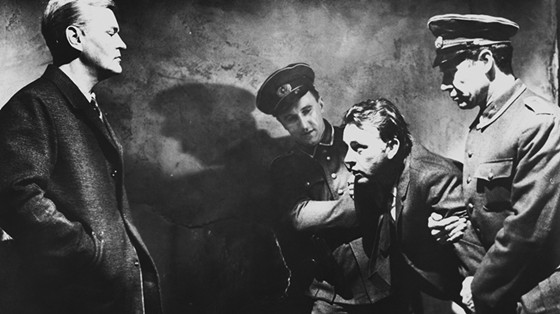
Perhaps because he managed it much sooner and more successfully than many, Martin Ritt, one of the finest directors of Americana working in Hollywood, is rarely given credit for his remarkable rebound from the blacklist. Though better remembered for such films as the modern western “Hud” (1963) and the wonderful Afro-Americentic rural period piece “Sounder” (1972), he was masterful working in many genres, and one of his best films is a picture which might seem an outlier in his cannon.
In the decades since his first bestseller, the book upon which this film is based, British author John Le Carre has become acknowledged as the master of realistic espionage fiction. “The Spy Who Came in From the Cold” was, at the time, as acclaimed for being the “anti-James Bond” as anything else.
The story, rendered in clammy black and white, is set in a newly divided Berlin. The titled character (played by Richard Burton, in the kind of performance that shows how much of a waste of talent most of his films and performances could be considered) is a longtime agent/spy whose life and career is a long way from being like James Bond’s.
He is an embittered outcast from society and his latest (probably last) assignment pulls him and a relatively innocent woman (the fine British actress Claire Bloom) into a twisting plot in which they are the tragic pawns of those with much more to gain than themselves (including a character played by the powerful German actor Oskar Werner).
The ending is realistically unhappy for all. Perhaps this was just too downbeat to be a bigger hit than it became or to be as well remembered as it should, but it stands as one of the best efforts of all involved.
7. The Friends of Eddie Coyle (1973)
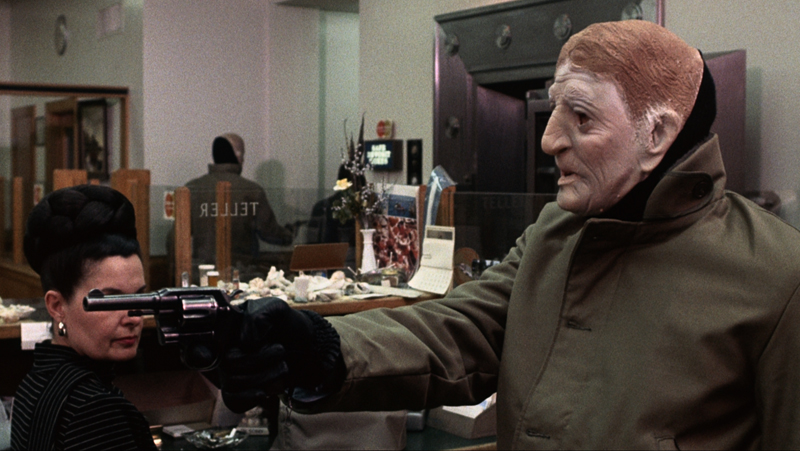
Why did Robert Mitchum have to keep acting long past the age when many of his contemporaries were retired and routinely getting plaudits before he even began to be properly appreciated? Well, thankfully, he didn’t have to wait for death for that to happen (and just as well, since James Stewart died the day after he did and pushed all posthumous appreciations of him to the back pages). He was like a guilty pleasure throughout much of his career, a tonic to the many stalwart, cookie-cutter leading men of his day.
Many of his films weren’t big hits or were flops when they came out but look like classics today (1955’s “The Night of the Hunter” and 1962’s “Cape Fear” are as good examples as any of this). He was only nominated once for an Oscar (a supporting nom for his career-changing role in 1945’s “The Story of G.I. Joe”) and there’s no need to even ask about any honorary or lifetime awards (not that he would ever admit to wanting them or even turning out to accept them).
As with so many mavericks, the New Hollywood era seemed to set him free to do work more honestly in keeping with his creative spirit (not that he would ever admit to anything so highfalutin’). Though many his age would have been considered past their prime, his films of the 70s and early 80s are among his best works. One film that somewhat got lost in the shuffle that now looks like a neglected masterwork is “The Friends of Eddie Coyle.”
British director Peter Yates had scored a major hit with 1968’s “Bullitt” (leading Mitchum’s spiritual twin Steve McQueen to what may be his best performance). Some five years later he joined with Mitchum in another crime drama, except this one wouldn’t have any of the glamour of “Bullitt” and the main character would be on the other side of the law.
Taken from a book by noted crime author George V. Higgins (a former state’s attorney general), the story focuses on the title character, a minor Boston thug trying to stay out of jail by being an informant to the law. This is most dangerous, especially with a big robbery in the works and a higher-powered double-sided player (a local barkeep played by the excellent character actor Peter Boyle) around stirring the pot. Eddie’s “friends” are far from friendly and his prospects look realistically dim.
The cast in this film is perfect and includes such familiar faces as Alex Rocco, Joe Santos and the unjustly forgotten Richard Jordan as the unheroic, unsympathetic agent of the law (notably there are no major female roles in this film). These players may not come to mind for lists of great thespians, but they are just right for these roles. Also, Yates captures the atmosphere of Boston magnificently, especially impressive for someone from another country.
This also seems a more honest work than “Bullitt” but perhaps the deliberately missing flash and dash of the earlier film is what doomed it with the public. Still, it showcases the most sadly knowing, world-weary, been-around-the-block-many-times actor ever on-screen to a stunning degree.
8. Veronika Voss (1982)
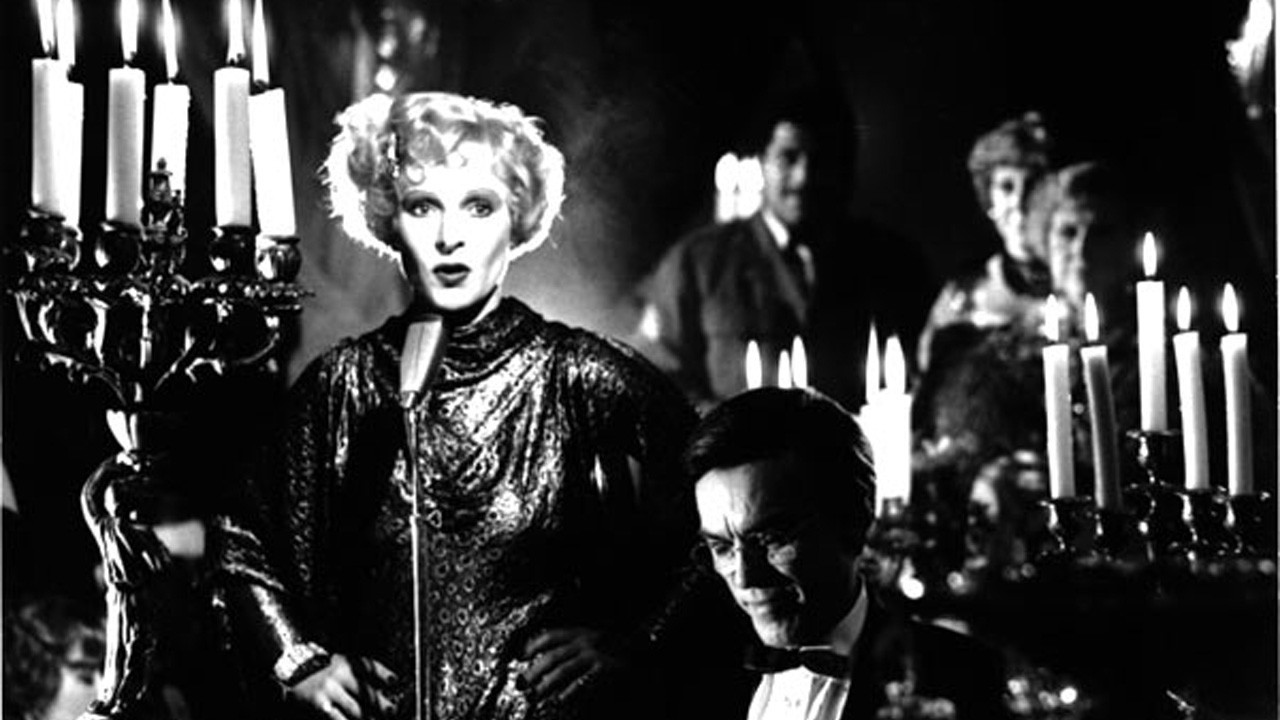
(West) German filmmaker Rainer Werner Fassbinder more and more looks to have been the wunderkind of his country’s film industry during the era of the New German Cinema. Yes, there were other worthies such as that other Werner (Herzog), but Fassbinder had a spark and excitement not given to many.
Anyone who knows of him knows that he was like a firecracker, loud and colorful and kinesthetic and all too quickly gone thanks to a live-fast-die-faster lifestyle. He must have known it as well since he packed an astounding 40ish films into a less than two decade career.
There are many films that are remembered and several less so. The ones that aren’t tend to be his early ones from the late 60s and early 70s. He seemed to grow more self-assured as he went along, and his 1980 TV masterpiece “Berlin Alexanderplatz” and the films of his BDR trilogy (made between 1979 and 1982) weren’t his very last, but did seem to put a capstone on his career. It’s odd then that one of those trilogy films can be said to be overlooked.
1979’s “The Marriage of Maria Braun” might be the single best known Fassbinder film. 1981’s “Lola” has it’s share of fans. However, the stylish “Veronika Voss” doesn’t seem to get mentioned much. Fassbinder was fascinated by the rather turbulent and fragmented history of his county during the 20th century. The women at the center of each of the BDR films represent an aspect of that history during the century’s midpoint. The first two films were about different sections of the famed “economic miracle” which put West Germany back on its feet.
Though one film has a shocking (tragic?) ending and the other a cynical one that’s at least happy for some of the characters, “Veronika Voss” embodies the downbeat side so indigenous to the filmmaker. The title character (Rosel Zech) was once a movie star… during the days of the Third Reich (and she might just have been friendly with Dr. Goebbels, but why get into that?). However, that was a decade ago and no one outside of Germany and its then occupied territories would even remember who she was.
Even worse, Veronika has developed a dependency on morphine, something a cruel doctor is all too happy to exploit. Filmed in velvety black and white, this film is its maker’s statement on the broken-down state of those who were so closely bound to such an unfortunate period in the country’s history and who, unlike the characters in the other films, don’t seem to have the wherewithal to pick up and move on past the tragedies of the times.
Of course, one key difference is that, unlike Maria and Lola, Veronika had been at the top during the Nazi heyday and didn’t wish to move on to another era. Total downers are often quite hard to love and this one was no exception. However, it stands up and holds its own against the other two parts of its trilogy.
9. The Immortal Story (1968)
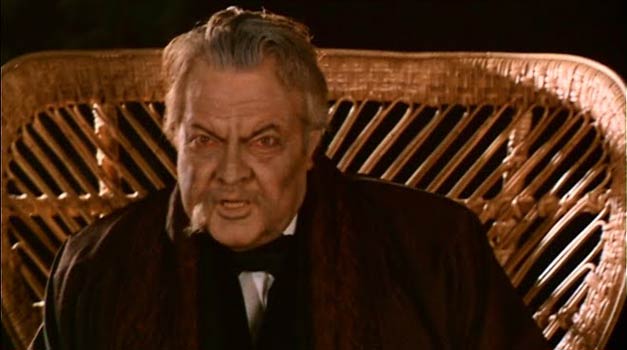
There could be a good argument made that, aside from the sentiments of the faithful for whom every frame he ever shot should be enshrined in platinum, every film made by Orson Welles that doesn’t happen to be 1941’s endlessly famous “Citizen Kane” is overlooked. Some, such as 1958’s “Touch of Evil,” 1952’s “Othello,” and 1967’s “Chimes at Midnight” have come back with a bang.
However, when was the last time much fuss was made over 1946’s “The Stranger,” 1956’s “Mr. Arkadin” (despite Criterion’s best efforts) or 1960’s “The Trial”? This is no comment on the films’ inherent quality, just how it’s broken for them. One film that was/is/probably always will be overlooked is “The Immortal Story.”
Many may never even have heard of this film. There are reasons for this and reasons why this fact shouldn’t be. First of all, it wasn’t made for theaters. A television network in France gave Welles money to make a film. (Welles wasn’t at all averse to TV and, in fact, won a prestigious Peabody Award for the 1956’s “The Fountain of Youth,” a pilot the US networks decided against.)
It wasn’t a lot of money and they didn’t want a long film. The resulting product is 63 minutes long, killing its theatrical chances outside of a double bill or some sort of museum or film society showing. However, Welles had a free hand (something not to be sneezed at as he rarely did have one). He loved the stories of Danish writer Isak Dinesen (actually Baroness Karen Blixen, best known to film lovers as the subject of 1984’s Oscar winning biopic “Out of Africa”) and was allowed to chose one to film (the only time he ever managed to complete the filming a Dinesen story).
He was allowed to cast the film. He chose old cohorts Norman Eshley and Spanish star Fernando Rey, along with newcomer Roger Coggio (in his only film appearance). However, the crowning glory was one of his most famous acolytes: Jeanne Moreau. Once again, she showed that she came to act and would bend greatly (even to forgoing a salary Welles and the network couldn’t afford) to work with superior artists (and she did that for Welles more than once).
The story, set in late 19th century Singapore, concerns a very rich and equally corrupt businessman named Mr. Clay (Welles himself). Clay knows that his time is short and he has chosen an odd goal for his last days: he wants to bring to life an old legend concerning a wealthy man hiring a poor young sailor to sleep with his wife. Clay starts off by cheating, since he has no wife. Instead, he pays a visit to the embittered daughter (Moreau) of a man he ruined to the point of death. Though she could use the money, she principally agrees in order to try and find some revenge to visit on Clay.
Next he finds a starving young sailor (Coggio) on the streets. With all arranged and Clay giving himself a discreet but optimal seat for viewing, things play out, but not at all as anyone envisioned. Welles had an extravagant personality and, thus, many assumed his films were extravagant as well.
That is a misconception, for none of them are excessive and all make much of little, never more so than here. The period is convincingly rendered in a few deft strokes. The action plays out in the sort of mystical, heightened, yet comprehensible way that marks many a Welles film. As ever, Welles was quite simpatico with his talented players. “The Immortal Story” may be little but it packs a big punch.
10. Opening Night (1977)
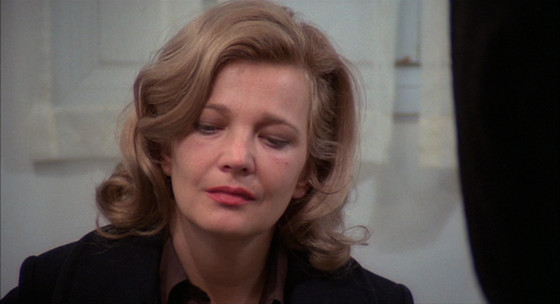
Gena Rowlands has always been an exemplary actress but one might suspect that she was an even better wife. Her lifelong husband, actor-director-screenwriter John Cassavetes, could easily have had a big acting career as a conventional leading man. He could have also had a good career as a director of studio projects.
He wanted neither. He wanted to make films his own way (he tried it the studio way and ended up pleasing nobody, least of all himself) and that way was quite individualistic. He would create the basic plot and scene situations and then have the actors come in for long improv sessions, record and edit their best work, then put it all together and rehearse them until they achieved the spontaneous feel of the improv again.
His films also deliberately had a hand-held, documentary look. It was arduous labor and never likely to pay off big in a box office way (it came close a few times but, no). She wasn’t just a good sport, but she, who had a healthy acting career of her own, allowed her husband to make her his eternal star (even in films in which he didn’t appear) and performed all of the emotional gymnastics which his scripts asked of her (and they were plentiful and wild).
Many will always think that her extraordinary Oscar-nominated performance in 1974’s “A Woman Under the Influence” is her finest hour (and his, too). Maybe so, but another family project, a film Cassavetes angrily pulled and threw away after only one bad week in the theaters, might just contain her best runner-up performance.
In “Opening Night,” Rowlands plays stage actress Myrtle Gordon (would any actress have such a name?) who is having a hard enough time finding her character in a new play and balancing a messy personal life. However, when she sees a devoted fan get accidentally killed while running after her car on the day of the play’s opening, its just about too much for her (yes, Pedro Almodovar later used that plot point for “All About My Mother”). Lots of improvised soul searching is due to follow.
This film is like an acid test to see if one can tolerate Cassavetes’ brand of filmmaking. There is much business going on, yet little enough actually happens. However, the film handles its many emotional moments (actually, most of the moments are emotional) honestly. Aside from its monumental star, the director-writer and family friend/muse Ben Gazzara are on hand as the men in the actress’ life (along with cameos by other friends/co-workers Peter Falk, Seymour Cassel and director Peter Bogdanovich).
The supporting cast includes Hollywood character actors Zohra Lampert and Paul Stewart but, best of all is the cast member playing the author of the play (“Another Woman”… possibly under the influence as well?). That player is the wonderful vintage Hollywood vet Joan Blondell. She always seemed one of the most game players in golden age Hollywood films and she proves it here.
Acting in such a different style from her usual couldn’t have been easy, but she was always a cheerfully honest presence and she uses that admirably here. No, this film is no more mainstream than any other Cassavetes film but, if one can go with it, it’s rewarding.
Author Bio: Woodson Hughes is a long-time librarian and an even longer time student/fan of film, cinema and movies. He has supervised and been publicist for three different film socieities over the years. He is married to the lovely Natalie Holden-Hughes, his eternal inspiration and wife of nearly four years.